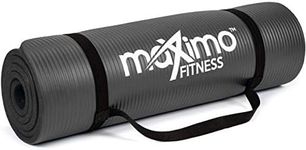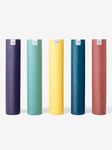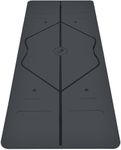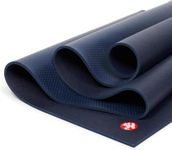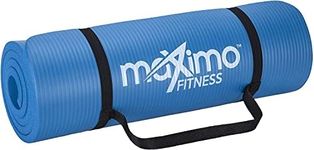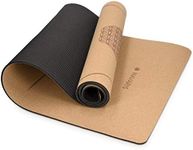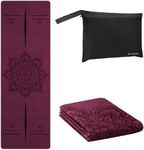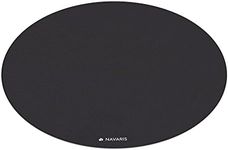Buying Guide for the Best Yoga Mat
Choosing the right yoga mat is essential for a comfortable and effective practice. A good yoga mat provides the right amount of cushioning, grip, and stability, enhancing your overall experience. When selecting a yoga mat, consider your personal needs, the type of yoga you practice, and where you will be using it. This will help you find a mat that supports your practice and aligns with your preferences.MaterialThe material of a yoga mat affects its texture, stickiness, and eco-friendliness. Common materials include PVC, TPE, natural rubber, and cork. PVC mats are durable and provide good grip but are not eco-friendly. TPE mats are lightweight and recyclable, offering a balance between grip and comfort. Natural rubber mats are eco-friendly and provide excellent grip but can be heavy. Cork mats are sustainable and offer a unique texture. Choose a material based on your environmental concerns, desired grip, and texture preference.
ThicknessThickness determines the level of cushioning and support a yoga mat provides. Standard mats are about 1/8 inch thick, offering a balance of stability and comfort, suitable for most practices. Thicker mats, around 1/4 inch, provide more cushioning, ideal for restorative or therapeutic yoga, or for those with sensitive joints. Thinner mats, around 1/16 inch, offer more stability and are great for travel or practices requiring more balance. Consider your comfort needs and the type of yoga you practice when choosing thickness.
TextureTexture affects the mat's grip and how it feels under your hands and feet. Smooth mats provide a softer feel but may become slippery when wet. Textured mats offer more traction, which is beneficial for maintaining poses, especially in hot yoga. If you tend to sweat a lot or practice vigorous styles, a textured mat might be more suitable. Consider your comfort with different textures and your need for grip when selecting a mat.
StickinessStickiness refers to how well the mat prevents slipping during practice. A sticky mat helps you maintain alignment and hold poses without sliding. PVC mats are known for their stickiness, which can be beneficial for beginners or those practicing styles that require precise alignment. If you prefer a mat with less stickiness, consider materials like natural rubber or cork. Your choice should depend on your practice style and how much grip you need.
SizeThe size of a yoga mat affects your comfort and ability to move freely. Standard mats are about 68 inches long and 24 inches wide, suitable for most people. Taller individuals may prefer longer mats, around 72 inches or more, to ensure they have enough space for poses. Wider mats can provide extra room for movement. Consider your height and the space you need for your practice when choosing the size of your mat.
PortabilityPortability is important if you plan to carry your mat to classes or travel with it. Lightweight mats are easier to transport and often come with carrying straps or bags. However, they may offer less cushioning. Heavier mats provide more support but can be cumbersome to carry. Consider how often you will be transporting your mat and your preference for weight and convenience when selecting a mat for portability.
